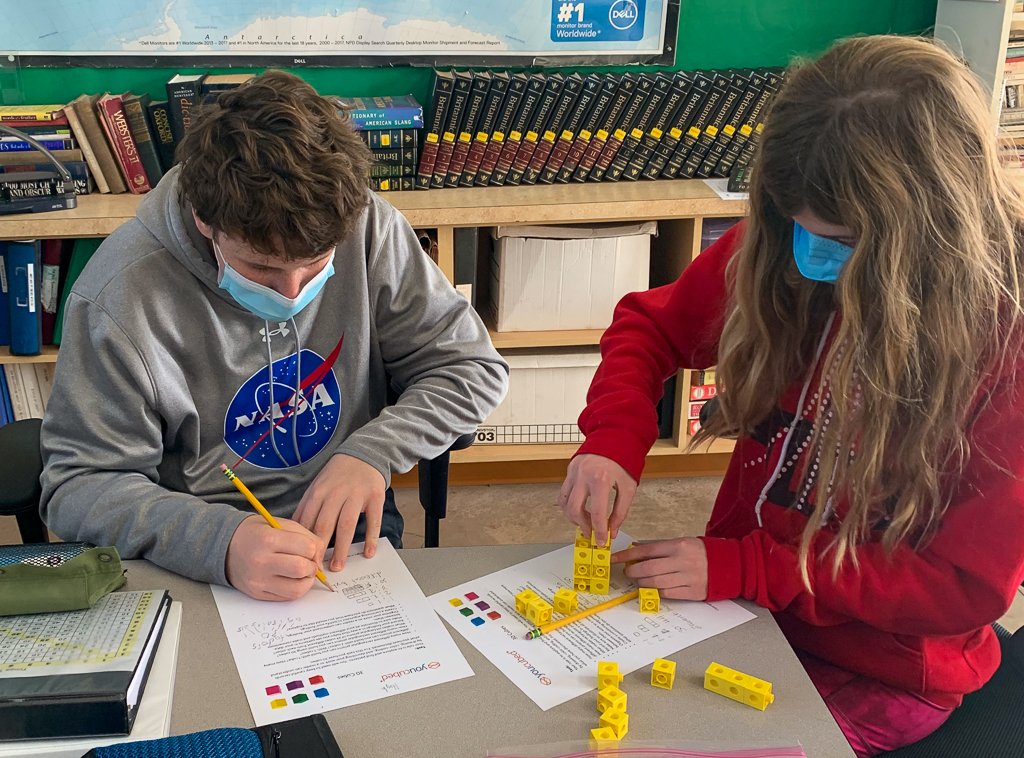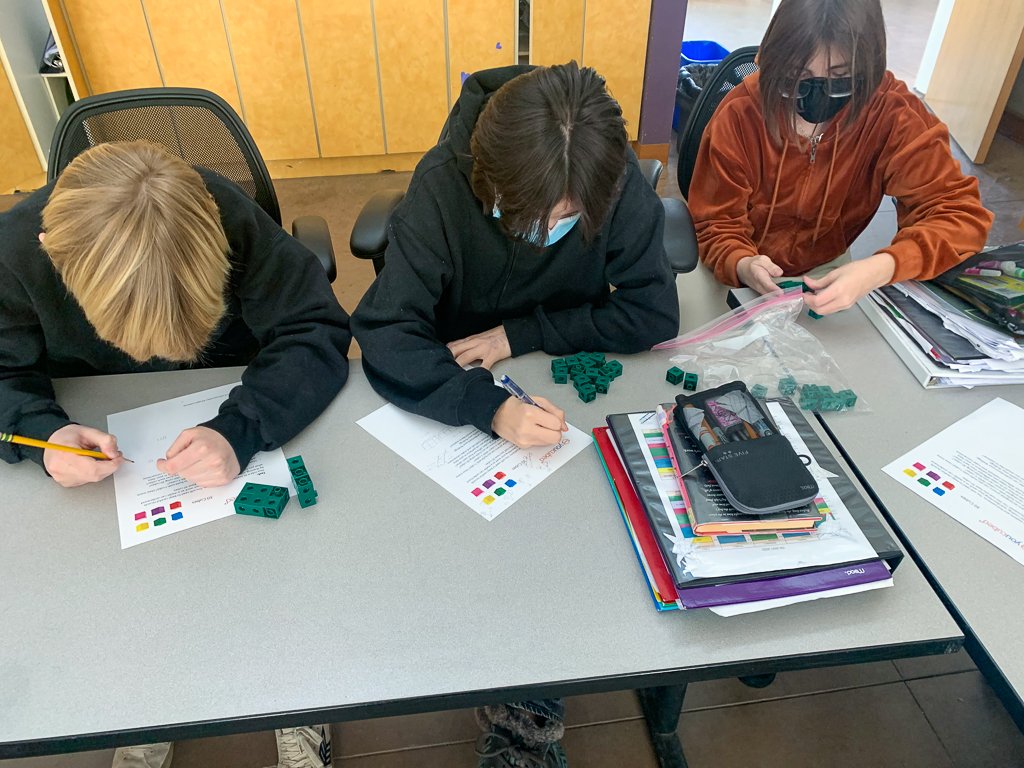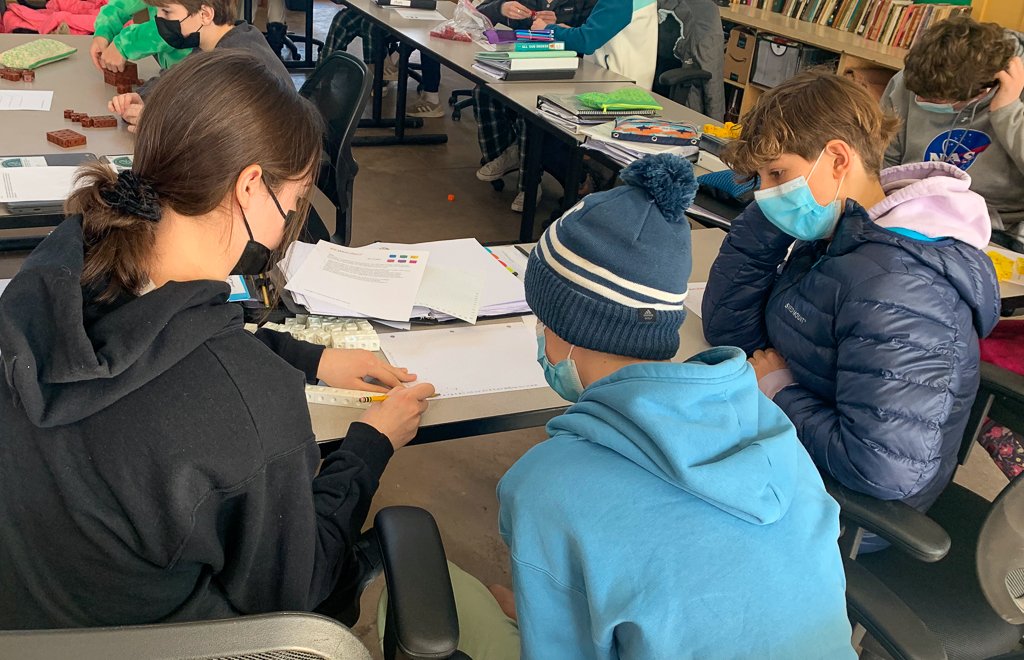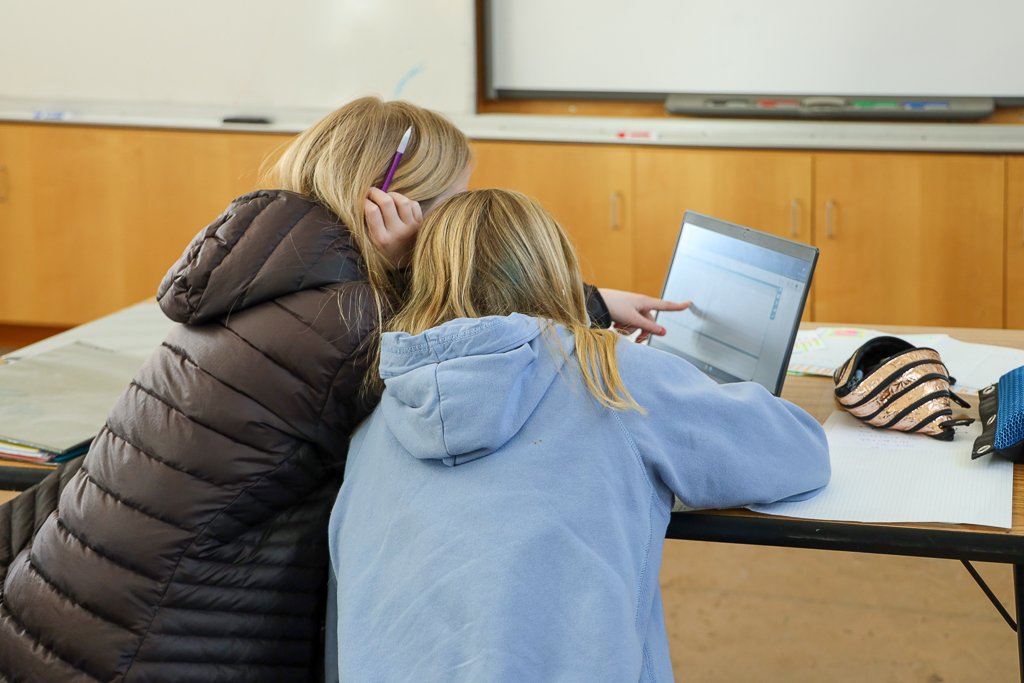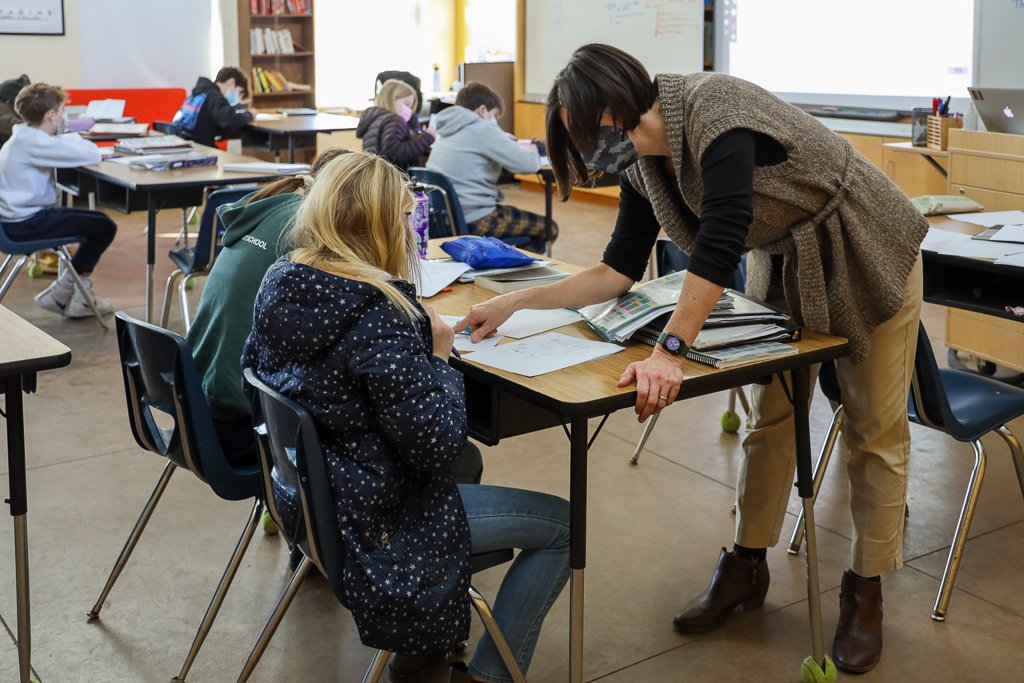Why I Love Teaching Math
From the time I was very young, I knew I wanted to be a teacher.
I am not sure what it was exactly that I loved about it. But as the oldest of four who was often left in charge, it seemed a natural fit. As a child, I would set up school for my dolls and stuffed animals and spend hours pretending to teach them.
What drew me to study maths in college and see a future teaching is polar to why I came to love maths and teaching it. Maths seemed to be organized and have a definitive end point. Follow the steps and solve the problem. Not like writing a paper that could be edited and improved infinitely or analyzing text that could be looked at from an abundant amount of perspectives. Math was predictable. I was a rule follower, and math followed rules. And that is what I did throughout almost all of my math courses - learned the rules and applied them.
The first class that gave me a glimpse of how exciting maths could be was a course in combinatorics. It was in the early 1990’s when the AIDS epidemic dominated the news cycle and seemed to be the greatest health care crisis to mankind (long before COVID). The professor provided some statistics on the accuracy of the tests to determine infection and then put us in groups to determine what that looked like in a population of 100 people and then 1,000. How many people would likely be falsely positive? How many could be likely falsely negative? I could not for the life of me remember any of those numbers, but I remember being fascinated. And wanting to learn more. Calculate more situations, manipulate the numbers. It was the first time the formulas made sense to me and the problems were relatable. I thought this class was unique because it seemed so tangible. It took me years to realize it was different because of how it was taught.
Shortly after completing this class, I started my student teaching practicum in public high school. I was young and naive and thought my memorized maths could help change the world. I worked with an experienced teacher who would give her students a copy of the test for them to memorize so they wouldn’t fail. She told me that they would never be able to learn all that they were expected to know. It was disheartening. If they were expected to fail, how would they ever think they could succeed? I loved my time with those students, but I found I lost any interest in becoming a part of this system.
And so, when I graduated and opportunities for work outside of teaching arose, I jumped on them and left teaching and maths in the rear view.
That was until my daughter was born, when I stopped working full time and started tutoring math as a part-time job.
I worked with a variety of students, but mostly middle schoolers who were struggling to understand their math work and had absolutely no confidence in their abilities. I spent my afternoons with students, and delighted in spending my mornings with my toddler. I loved watching her play and making connections. Watching her at the beach one day putting rocks in one bucket and shells in another as we walked down the beach, it occurred to me that she was a little mathematician, sorting and organizing. She enjoyed puzzles, building with her blocks, lining up her stuffies in her crib. Not only was my baby learning to talk and walk, she was learning maths – and finding great delight in every discovery. And it was not just her. All the babies in our playgroups were doing the same things. Of course, they each had their favorites, but every child in that group found joy in some mathematical activity.
I wondered when that joy was lost for the students I was working with. Why was there no delight in discovery? And realized that it was because what they were doing was not mathematics. It was computing and following directions. They were not discovering anything. This realization reframed my approach. Students did not need to practice and practice. They needed to understand the maths they were presented with. Memorizing rules that meant nothing to them was only a short lived fix.
Providing models and language to build understanding is essential. Models to help visualize the math and language to help anchor the ideas. Tactile grounding and talking through solutions develops an understanding that will never come with rote practice. And above all else, the freedom to be messy and make mistakes is paramount to anyone’s ability to learn.
Most adults don’t see the need for models and mess in math class. They know the procedures they were taught, but they don’t know the excitement that comes from discovery that is within all of that. A procedure is most certainly the most efficient way to solve a problem. It is the paved road to the destination. But, to just teach the procedure is like giving a reader the cliff notes to Of Mice and Men or To Kill a Mockingbird. You may be able to learn everything about the characters and plot, but you will never love the book.
Unfortunately, working formulaically is not the only thing adults want to hand down to children. They also pass on this awful lie that some people can’t “do math.” Everyone can learn maths – even the really hard stuff. Those toddlers playing with puzzles on the floor had not yet heard this myth. But a system that makes math a timed sport with answers that are all right or wrong pass on that damning lie. Children who have a hard time memorizing the formula for area, or take too much time to compute seven times nine will come to believe that they “can’t do” maths because adults understanding of what maths is. Jo Bolar reminds us that “maths are about creativity and making sense” and that “depth is more important than speed.” While high stake tests would have us all believe otherwise, maths are more about the process than the final answer, and thinking is far more valuable than calculating.
“Invention and discovery emanate from the ability to try seemingly wild possibilities; to feel comfortable being wrong before being right; to live in the world as a careful observer, open to different experiences; to play with ideas without prematurely judging oneself or others; to persist through difficulties; and to have a willingness to be misunderstood, sometimes for long periods, despite the conventional wisdom.”
Perhaps the greatest tool in learning maths is a positive growth mindset. When children – and for that matter all learners – are encouraged to embrace their mistakes and see struggle as an opportunity for growth, it allows them to open themselves up to taking risks that are essential to learning. This freedom to make mistakes and time to ponder and contemplate is so important to all learning – and missing from most math classrooms. If we allow children to believe their mistakes are anything but an opportunity to learn, we are holding them back from their greatest potential.
This is not just for the child who struggles to learn. It is also important for that the child who learns quickly and seems adept at memorizing and mastering techniques. A child who is constantly praised for their correct answers and success has difficulty realizing that struggling is okay. Alina Tugend, author of Better by Mistake: The Unexpected Benefits of Being Wrong, writes “we’re raising a generation of children — primarily in affluent, high-achieving districts — who are terrified of blundering. Of failing. Of even sitting with the discomfort of not knowing something for a few minutes.” Giving students time to think and room to fail is as important as teaching them their basic math facts.
In my math class we spend a week (sometimes longer) discovering the Pythagoras’ Theorem. I could easily share the proof with students and then have them practice it on a variety of problems. But their discovery of that ratio by cutting out squares and triangles, trying out different ideas, and making countless mistakes, is what allows them to own that formula, to commit it to memory, but to understand its magic. My favorite moment is when — after struggle, mistakes, and many questions, a student’s eyes light up with understanding. When they have made a connection beyond the right answer, a connection that will stay with them and allow them to move on to more exciting discoveries. It is because of that light, the twinkle of awe, that I love teaching math.


